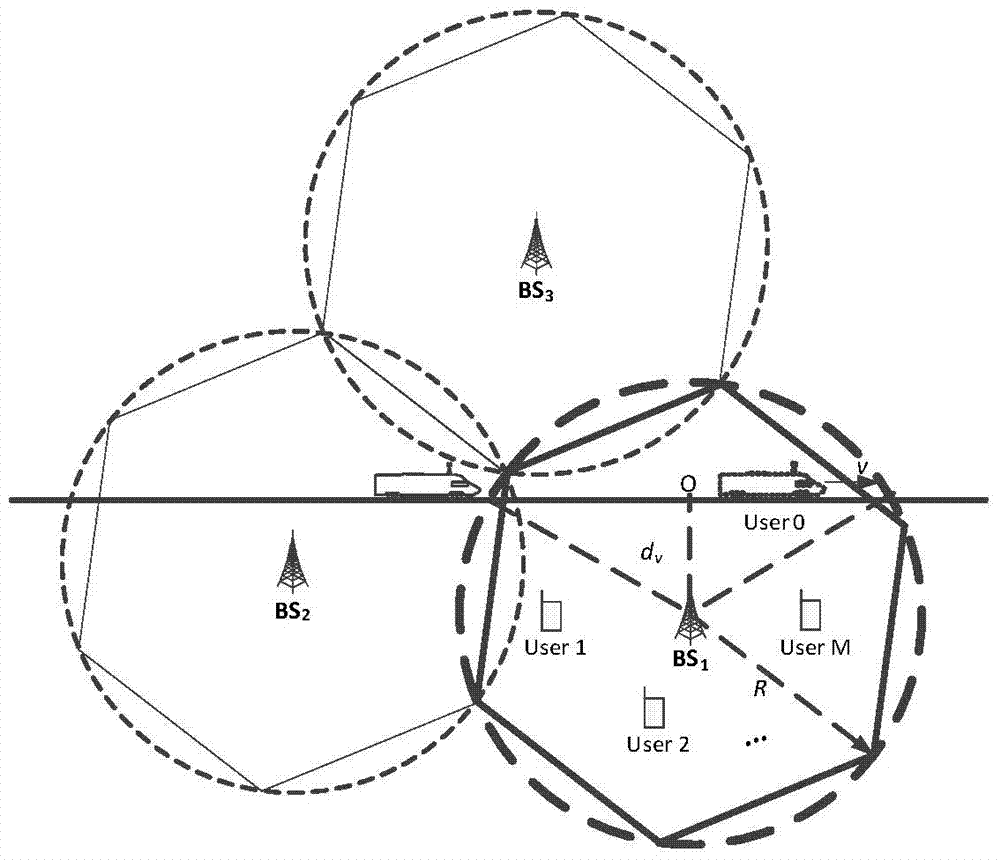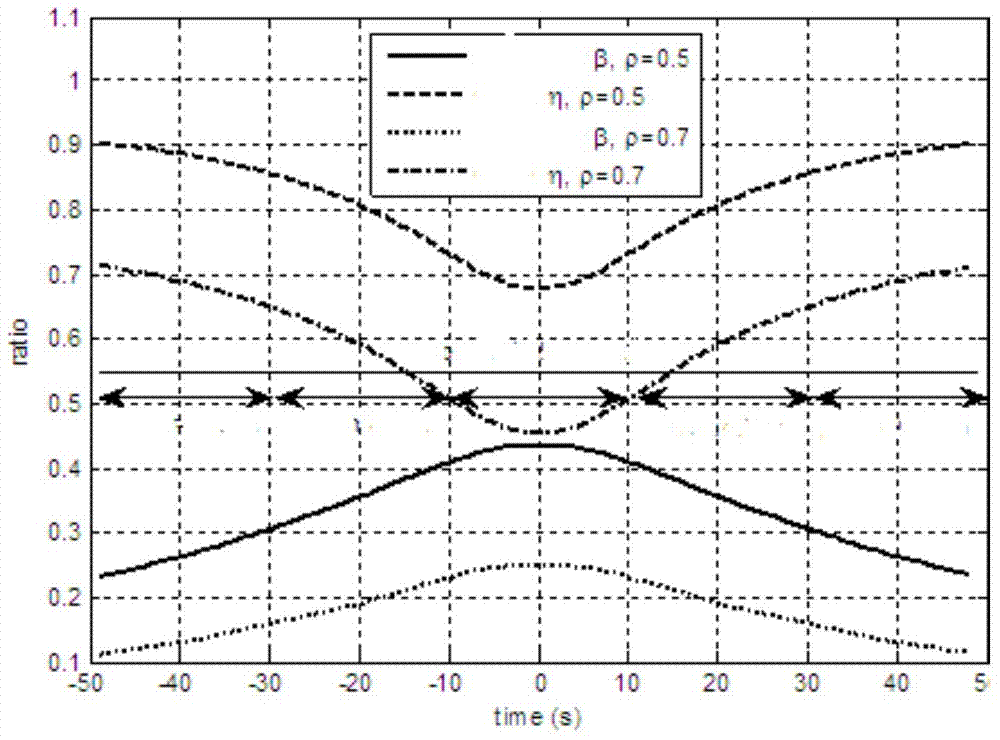Resource allocation method of sharing OFDMA system between high speed train and local user
A technology for local users and high-speed trains, applied in the distribution between users/terminals, transmission systems, digital transmission systems, etc., and can solve the problems of inter-carrier interference, system resources cannot be better and effectively allocated, etc.
- Summary
- Abstract
- Description
- Claims
- Application Information
AI Technical Summary
Problems solved by technology
Method used
Image
Examples
Embodiment Construction
[0017] The present invention will be further described below in conjunction with the accompanying drawings.
[0018] The high-speed train referred to in the present invention refers to trains with an hourly speed of more than 150 km / h such as bullet trains and high-speed rails.
[0019] 1. figure 1 The network model adopted by the present invention is shown. The coverage radius of the base station is R, and the vertical distance between the train track and the base station is d v , there are M local users in the system, denoted by m=1,2,...,M, and it is assumed that all local users are quasi-stationary. Assuming that the train is moving at a constant speed, its moving speed is v, and the moving relay on the train is represented by m=0. by figure 1 Middle O point is the zero point in time, so the present invention takes the train passing through the base station BS1 as an example, discussing in The resource allocation problem of local users and mobile relays on trains, wh...
PUM
 Login to View More
Login to View More Abstract
Description
Claims
Application Information
 Login to View More
Login to View More - R&D
- Intellectual Property
- Life Sciences
- Materials
- Tech Scout
- Unparalleled Data Quality
- Higher Quality Content
- 60% Fewer Hallucinations
Browse by: Latest US Patents, China's latest patents, Technical Efficacy Thesaurus, Application Domain, Technology Topic, Popular Technical Reports.
© 2025 PatSnap. All rights reserved.Legal|Privacy policy|Modern Slavery Act Transparency Statement|Sitemap|About US| Contact US: help@patsnap.com



